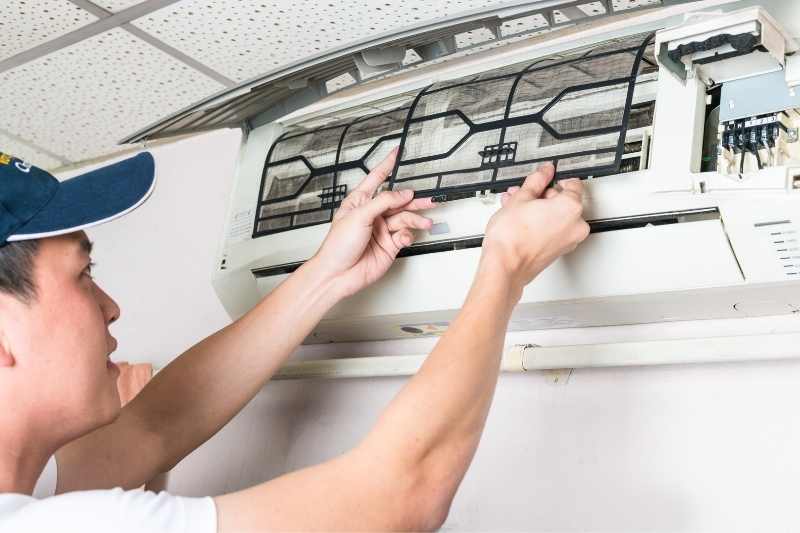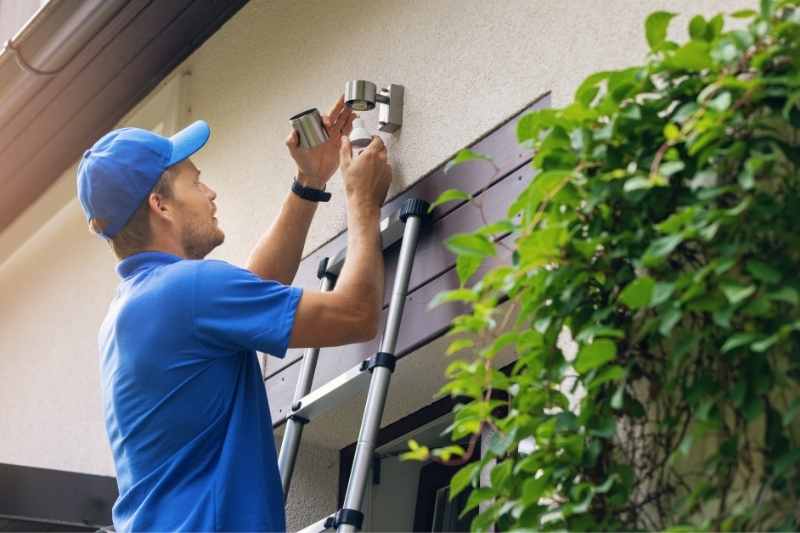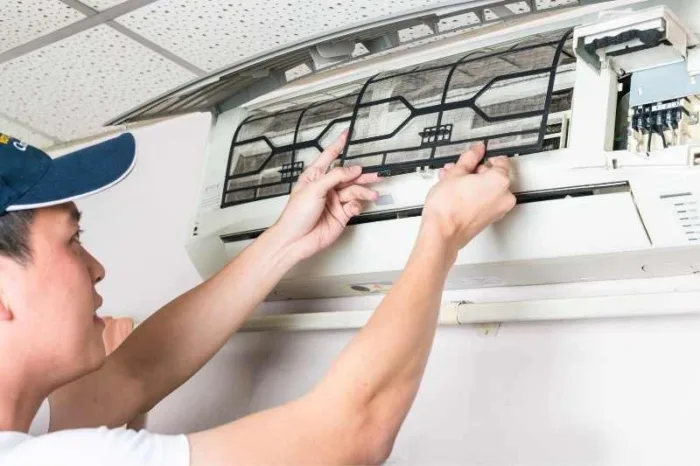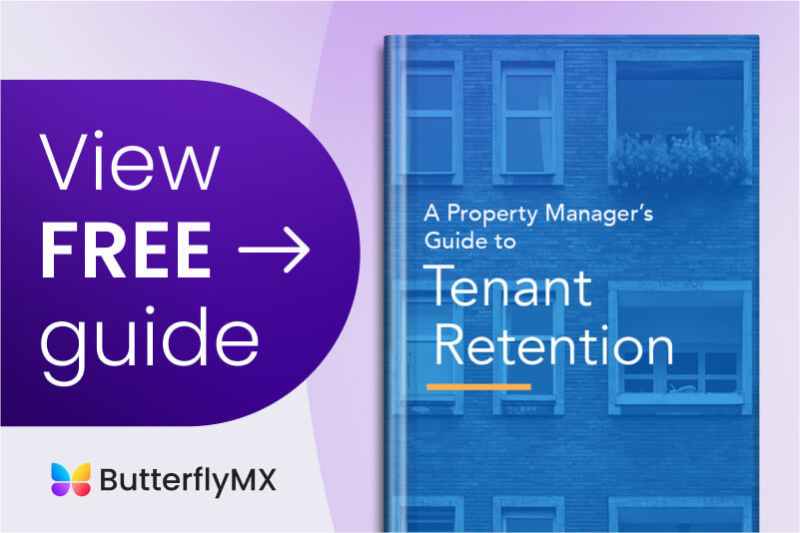Key takeaways
- Save money and time in the long run by planning ahead for preventive maintenance.
- Properties of all sizes need maintenance.
- Budgeting for upgrades is one of the best maintenance strategies.

The day-to-day of managing a building is both time-consuming and challenging. However, your property still needs upkeep and property maintenance. So, save yourself time and money in the future by investing in preventative property maintenance now. Proactive maintenance will keep your property in great working condition and improve the quality of your building long term.
Follow along with this post to learn:
- What is preventative maintenance in real estate?
- The four types of preventative maintenance
- Benefits of preventative maintenance
- How to create a preventative property maintenance checklist
What is preventative maintenance in real estate?
Preventive property maintenance is the important task of managing regular inspections and repairs while equipment around the property is still functioning properly. The goal of preventative maintenance is to prevent expensive system failures and repairs before they happen. Also, catching problems early helps keep maintenance costs lower and reduces the risk of accidents.
The four types of preventative maintenance
Taking the right precautions keeps the risk to your business at a minimum so that you and your staff can focus on improving what works, instead of having to repair what is broken. Any type of maintenance that is not reactive (ie – fixing a burst pipe) is considered preventive. That said, not all property preventative maintenance is the same.
There are four important types of preventive maintenance to address:

1. Time-based
Some of the most common preventative maintenance tasks are performed seasonally or quarterly.
Examples of time-based maintenance include tasks like:
- Winterizing pipes
- Cleaning gutters
- Quarterly HVAC servicing
Time-based preventative maintenance for property management can be as simple as scheduling and tracking on a calendar.
Many service technicians and inspectors will help you with this by scheduling regular appointments at your property so you don’t have to monitor the calendar. In general, it can be helpful to create a schedule according to manufacturer recommendations for inspecting and cleaning equipment. In addition, you should keep in mind that the most essential equipment to your business should be checked regularly for smooth building operation.
2. Usage-based
Another strategy for preventative maintenance is to track usage. For example, your equipment can be checked and maintained based on the number of hours it’s been used. This is especially helpful for technical and mechanical devices. Usage-based maintenance applies to vehicles, gym equipment, elevators, and more that are used on a daily basis around your property.
Unlike time-based maintenance, you’ll need to put in a little more effort to determine how often to do these tasks. Some equipment automatically produces tickets or notifications when a certain number of operating hours have been reached. However, for other items, you’ll need to track operating hours manually for a few weeks to get an estimate. From there, you can schedule in advance how often to maintain the equipment.
Watch how ButterflyMX improves the resident experience:
3. Risk management
For expensive and potentially damaging assets, schedule more frequent inspections to prevent failures.
Manage risk by:
- Assessing the wiring on your access control system to make sure your building is always accessible
- Checking the roof for leaks to prevent water damage
- Performing electrical inspections to avoid fires
Thanks to modern technology, many risk management tasks can be simplified with smart sensors. To save you time, specialized technology can trigger work orders when a machine or appliance requires an inspection or replacement.
This type of onsite preventative property maintenance and repair is important for all kinds of buildings. However, industrial and commercial properties may find it the most impactful because keeping equipment operational at all times in these industries can result in significant cost savings. But multifamily housing also needs risk management to make sure that residents stay safe.
4. Augmentation
This type of preventative maintenance involves making improvements and renovations to upgrade your building. Finding new and better solutions for your property is an essential part of preventative maintenance because technology is constantly improving.
Examples of augmentative maintenance include:
- Upgrading to smart lights
- Installing a keyless entry system
- Replacing laundry machines with more efficient models
One of the most obvious benefits of preventive maintenance is that you can stay ahead of problems before they occur and save money. After all, the money you save on other types of preventative maintenance can make room in your budget for valuable improvements. These upgrades will not only make your building more efficient but will also better appeal to tenants. For example, investing in amenities tenants really want can increase renewal rates and your property’s NOI.
Benefits of preventative maintenance
It can be expensive to dedicate more resources to preventative maintenance, so you want to make sure that it’s worth it. There are a few key benefits to consider before you plan your maintenance strategy.
The benefits of budgeting for preventative maintenance property management include:
- Reducing downtime and closures caused by unexpected equipment failures
- Saving money in the long run because equipment lasts longer than before
- Paying less in overtime because there are fewer unexpected machinery breakdowns that cause employees to work late
- Improving the safety of employees, tenants, and visitors
- Spending less on utilities because your assets operate more efficiently and consume less energy
These are just a few of the benefits that come along with regular preventive maintenance. The only potential disadvantage to consider is that money can be spent unnecessarily. So make sure to carefully consider how you’re budgeting for preventive maintenance and invest in the right strategy.
See the different ways to open the door with ButterflyMX:
How to create a preventative property maintenance checklist
Proper planning with a building maintenance checklist is crucial for implementing an effective preventive maintenance strategy.
Too much or too little preventive maintenance will cost your building a lot of money. So, it’s worthwhile to invest the time now in deciding which preventive actions are necessary.
If you’re just starting out, you may not have statistics and records to work with. In that case, you’ll need to spend time researching similar properties and taking detailed notes.
Start by gathering all the following information:
- Catalog assets around your property such as vehicles, equipment, proptech, etc.
- Organize maintenance logs and work history to list previous repair events
- Check your building’s property management budget to see the total cost of your reactive maintenance for the past year
- Talk to existing technicians and service providers to get recommendations on how often maintenance should be done
- Research seasonal maintenance recommendations for your area to anticipate weather-related tasks
- Compare the cost of your current devices with smart technologies to see if upgrades will be cost-effective
Once you have these resources compiled, set goals for your maintenance schedule. From there you can plan a budget and calendar for preventative maintenance. Also, think about what times and days are quietest around the property so you can schedule work for those days. Putting the work in now to create a great preventative maintenance program will pay dividends in the long run.






